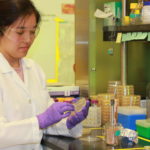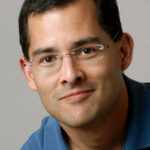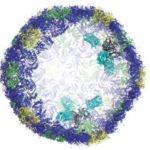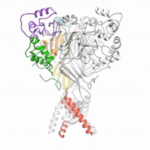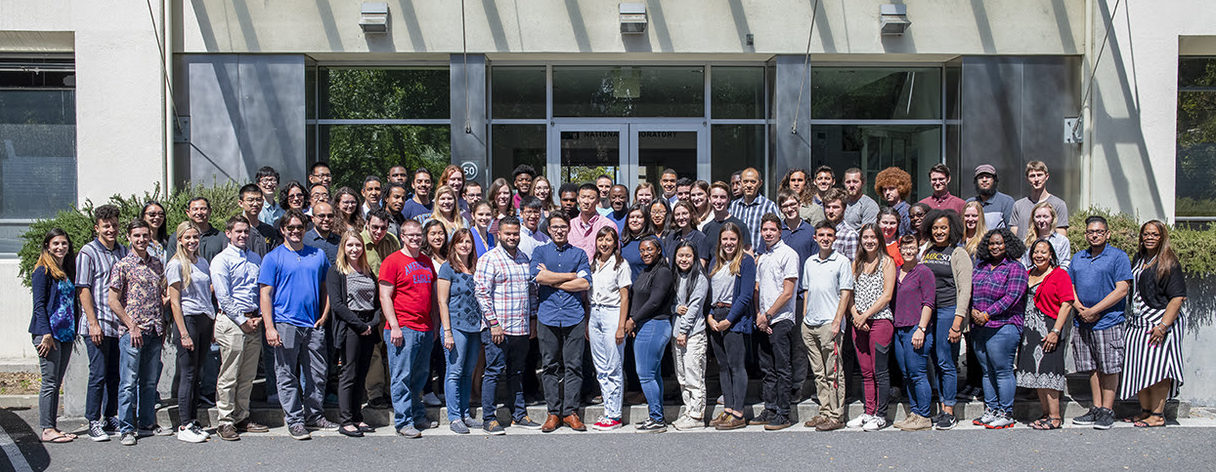 This summer the Biosciences Area has hosted student interns ranging from high school- through graduate school-level. They came to our laboratories through a number of programs dedicated to training the next generation of scientists. Some of our interns took time from their busy summer to share with us highlights of their experiences in the Biosciences Area.
This summer the Biosciences Area has hosted student interns ranging from high school- through graduate school-level. They came to our laboratories through a number of programs dedicated to training the next generation of scientists. Some of our interns took time from their busy summer to share with us highlights of their experiences in the Biosciences Area.
David Schaffer Selected as a Bakar Fellow
David Schaffer, a faculty scientist in Molecular Biophysics and Integrated Bioimaging (MBIB), has been selected as a Bakar Fellow for his work engineering cells to increase the production of viral vectors that can deliver genes into patients. In particular, delivery vehicles (vectors) based on the adeno-associated virus (AAV) have achieved success in clinical trials for rare diseases including hemophilia. But AAV is difficult to produce in sufficient quantity to bring gene therapy into routine clinical use. Schaffer, a professor of chemical and biomolecular engineering at UC Berkeley, is working to engineer cells for enhanced AAV vector production. With the support of the Bakar Fellows Program, he will work to create virus-producing cell lines that can generate many-fold higher levels of AAV vector than the current industry standard. Read the Berkeley News article to learn more about the award and his research.
New Methods to Control Bacterial Factories for Biotech Aims
Bacterial microcompartments (BMCs) are organelles that encapsulate portions of metabolic pathways, like miniature factories. They’re found across diverse phyla and do different things depending on the host. Scientists want to retrofit these factories to perform desired functions, such as producing biofuels, industrial materials, or nanoscale medical devices. But current technologies to manipulate BMCs, which consist of an enzymatic core surrounded by a shell made up of protein tiles, have limitations. In a recently published Nature Communications paper, researchers affiliated with Berkeley Lab’s Environmental Genomics and Systems Biology (EGSB) Division and Michigan State’s MSU-DOE Plant Research Laboratory present two new methods they’ve developed to facilitate the construction of synthetic versions.
Open and Shut: Pain Signals in Nerve Cells
Using protein crystallography at the Advanced Light Source (ALS), investigators at Oregon Health and Science University visualized an acid-sensing ion channel, ASIC1a, in it’s elusive closed state for the first time. An important cell membrane protein in the central nervous system, ASIC1a plays a role in sensing pain and in forming memories of fear. The researchers used protein crystals of ASIC1a channels purified in the closed state and compiled X-ray data from ALS Beamline 5.0.2 and the Advanced Photon Source at Argonne National Lab to build a model of the closed channel structure. Defining the closed structure enabled the researchers to generate a comprehensive molecular model of how ASIC1a toggles between the closed, open, and desensitized states.
Read more from the ALS.
Markita Landry wins DARPA Young Faculty Award
Markita Landry, a faculty affiliate of the Molecular Biophysics and Integrated Bioimaging (MBIB) Division, has received a prestigious two-year Department Of Defense Advanced Research Projects Agency (DARPA) Young Faculty Award for her work developing optical probes for neuromodulators such as dopamine. An assistant professor of chemical and biomolecular engineering at UC Berkeley, Landry conducts research at the intersection of single-molecule biophysics and nanomaterial-polymer science to develop new tools to probe and characterize complex biological systems. The DARPA project will focus on using synthetic near-infrared optical nanosensors—a new technology developed in the Landry lab—to develop a brain-computer interface driven by neurochemistry. Currently such technologies rely on electrical signals for signal acquisition, processing, and machine learning algorithms. Read a Berkeley Neuroscience news article to learn about how the award will allow her to investigate visualizing the probes in awake and behaving animals.
- « Previous Page
- 1
- …
- 116
- 117
- 118
- 119
- 120
- …
- 213
- Next Page »
Was this page useful?


